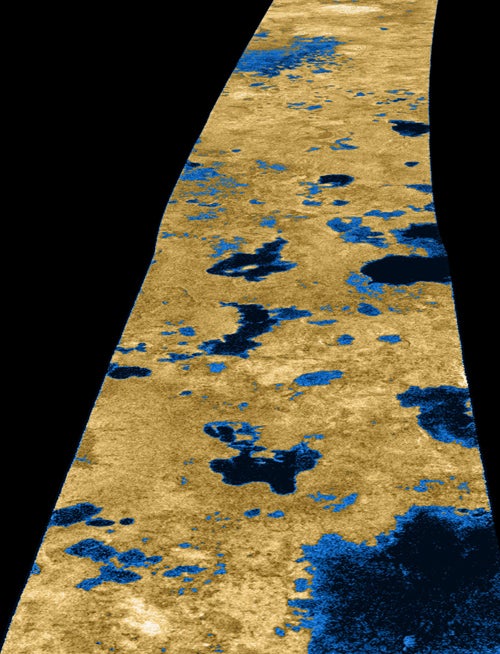
WAUKESHA, Wis. — With time running out, NASA decided to extend Cassini’s mission at Saturn for another 2 years. NASA originally planned to conclude its mission in 2008.
The so-called Cassini Equinox Mission will study Saturn as the planet passes through its vernal equinox in 2009 – the first time the Sun has shone directly down on Saturn’s equator and the plane of the planet’s rings in nearly 14 years. The extended mission will give scientists the chance to see what happens to the giant planet’s atmosphere as the Sun shifts from south to north of the equator.
The Cassini Equinox Mission will feature 60 additional orbits of Saturn, including 26 close flybys of Titan, seven of Enceladus, and one each of the icy moons Dione, Rhea, and Helene. Cassini will also monitor Saturn, the planet’s rings, and its magnetic environment.
This extended mission also allows scientists to follow up on some of Cassini’s biggest findings. Many of those came during dozens of close flybys of Saturn’s planet-sized moon, Titan.
“Cassini discovered huge lakes, river channels, and precipitation on Titan,” says Richard Talcott, Astronomy magazine senior editor. “In many ways, the moon looks a lot like Earth probably did before life evolved.”
The key difference: Sunlight warms Titan’s surface only to -290° Fahrenheit (-180° Celsius). So the liquid on Titan isn’t water but methane and ethane instead. Still, these hydrocarbons apparently cycle from the surface to the atmosphere and back again much as water does on Earth.
Cassini’s observations of the icy moon Enceladus proved nearly as exciting. “Cassini discovered geysers of water ice erupting from the south pole of this small moon,” says Talcott. “Scientists think pools of liquid water may lurk just beneath Enceladus’ surface.” The discovery has prompted mission planners to target Enceladus repeatedly during the extended mission. During its first 4 years, Cassini flew by the moon just three times; during the 2-year extended mission, the spacecraft will make seven more close passes. It may even dive to within 15 miles (24 kilometers) of the moon’s surface.
Once the Cassini Equinox Mission wraps up in 2010, scientists hope they’ll get another extension. The spacecraft should have enough propellant and power to survive years beyond 2010, helping to build a case for NASA to return to Titan and Enceladus with more advanced probes.
Astronomy‘s mission:
Astronomy promotes the science and hobby of astronomy through high-quality publications that engage, inform, entertain, and inspire.
More resources from Astronomy.com:
- Astronomy news
- Astronomy basics
- Glossary of astronomical terms
- Return to Astronomy “For the media” page









